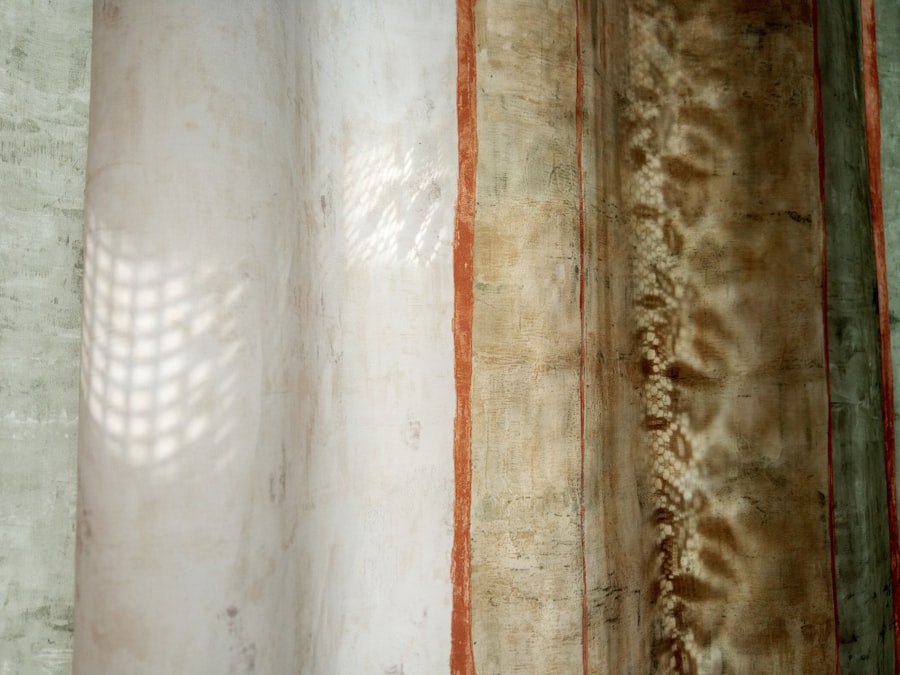Stretching is a fundamental process in the world of art, particularly when it comes to preparing canvas for painting. This technique involves the careful manipulation of fabric over a wooden frame, ensuring that the surface is taut and ready for the application of paint. The stretching process is not merely a practical step; it is an art form in itself, requiring precision and an understanding of the materials involved.
Artists often choose high-quality canvas, typically made from cotton or linen, which provides a durable and flexible surface. The choice of canvas can significantly affect the final outcome of a painting, as different textures and weaves can influence how paint adheres and interacts with the surface. The act of stretching canvas also serves a dual purpose: it preserves the integrity of the artwork while enhancing its aesthetic appeal.
A well-stretched canvas creates a smooth, even surface that allows for greater control during the painting process. Additionally, it elevates the artwork, giving it a professional finish that is ready for display. The tension applied during stretching must be just right; too loose, and the canvas may sag or ripple, detracting from the visual impact of the piece.
Conversely, if stretched too tightly, the canvas can warp or even tear. This delicate balance is crucial for artists who wish to achieve a flawless presentation of their work. Furthermore, the stretching process can be customized to suit individual preferences, with options for gallery wraps or traditional framing that can enhance the overall presentation of the finished piece.
Key Takeaways
- Stretching:
- Stretching a canvas is the process of securing the canvas onto a wooden frame to prepare it for painting.
- It is important to stretch the canvas tightly to prevent sagging or warping over time.
- Canvas Prints:
- Canvas prints are reproductions of artwork or photographs printed onto canvas material.
- They provide a unique and artistic way to display images in a home or office setting.
- Canvas Painting:
- Canvas painting is a popular medium for artists to create original works of art.
- It allows for a wide range of techniques and styles, from oil and acrylic to watercolor and mixed media.
- Canvas Framing:
- Framing a canvas adds a finished and professional touch to the artwork.
- It also provides protection and support for the canvas over time.
- Choosing the right frame can enhance the overall presentation of the artwork.
Canvas Prints
Creating a Canvas Print
The process of creating a canvas print typically involves transferring an image onto a canvas material using high-quality inks that are designed to resist fading over time. This durability ensures that canvas prints can be enjoyed for years without losing their vibrancy or clarity. Moreover, Canvas Prints provide an accessible way for art enthusiasts to bring beautiful imagery into their homes or offices without the prohibitive costs often associated with original artworks.
Versatility in Design
They come in various sizes and styles, allowing individuals to select pieces that fit their personal aesthetic and spatial requirements. From large statement pieces that dominate a wall to smaller prints that complement existing decor, canvas prints offer versatility in design. Additionally, they can be framed or left unframed for a more modern look, further enhancing their appeal.
Easy Maintenance
The ease of maintenance associated with canvas prints also makes them a popular choice; they can be wiped clean with a damp cloth, ensuring that they remain pristine without the need for specialized care.
Canvas Painting

Canvas painting has long been revered as one of the most esteemed forms of artistic expression. The medium offers artists a unique opportunity to explore their creativity on a versatile surface that can accommodate various techniques and styles. From oil and acrylic to mixed media, canvas serves as a blank slate for artists to experiment with color, texture, and form.
The absorbent nature of canvas allows for layering and blending, enabling artists to create depth and complexity in their work. This adaptability has made canvas painting a favored choice among both emerging and established artists alike. The emotional connection between an artist and their canvas cannot be overstated.
Each brushstroke carries intention and feeling, transforming a simple piece of fabric into a vessel of expression. Artists often find themselves lost in the process of creation, where time seems to dissolve as they immerse themselves in their work. This meditative state fosters innovation and allows for personal narratives to unfold on the canvas.
Furthermore, the tactile experience of painting on canvas—feeling the texture beneath their fingers—can inspire spontaneity and experimentation. As artists engage with their medium, they often discover new techniques or styles that resonate with their vision, leading to groundbreaking works that challenge conventional boundaries.
Canvas Framing
| Canvas Framing Metrics | 2019 | 2020 | 2021 |
|---|---|---|---|
| Number of frames sold | 500 | 600 | 700 |
| Customer satisfaction rate | 85% | 90% | 92% |
| Return rate | 5% | 4% | 3% |
Canvas framing plays a pivotal role in enhancing the presentation and longevity of artwork. While many artists choose to display their canvases unframed for a contemporary look, framing can add an element of sophistication and protection that elevates the overall aesthetic. A well-chosen frame not only complements the artwork but also serves to define its space within a room.
The options for framing are vast, ranging from traditional wooden frames to sleek metal designs, allowing artists and collectors alike to select styles that resonate with their personal taste and the character of the artwork. In addition to aesthetic considerations, framing provides practical benefits as well. A proper frame can protect the edges of the canvas from damage and dust accumulation while also preventing warping over time.
This is particularly important for larger pieces that may be more susceptible to environmental factors. Furthermore, framing can enhance the visual impact of a piece by creating a border that draws the viewer’s eye inward toward the artwork itself. The interplay between frame and canvas can create a cohesive look that transforms a simple painting into a striking focal point within any space.
Ultimately, whether an artist opts for framing or chooses to leave their work unadorned, the decision reflects their artistic vision and intention behind each piece. In conclusion, stretching, canvas prints, canvas painting, and canvas framing are integral components of the artistic process that contribute to both the creation and presentation of art. Each element plays a distinct role in shaping how artwork is perceived and appreciated by audiences.
Stretching ensures that canvases are prepared for optimal performance during painting, while canvas prints democratize access to art by providing affordable reproductions that maintain quality and vibrancy. Canvas painting itself remains a cherished form of expression that allows artists to explore their creativity on a versatile surface, while framing enhances both protection and presentation, adding an extra layer of sophistication to finished works. Together, these elements form a rich tapestry that celebrates the beauty and complexity of artistic creation in all its forms.


